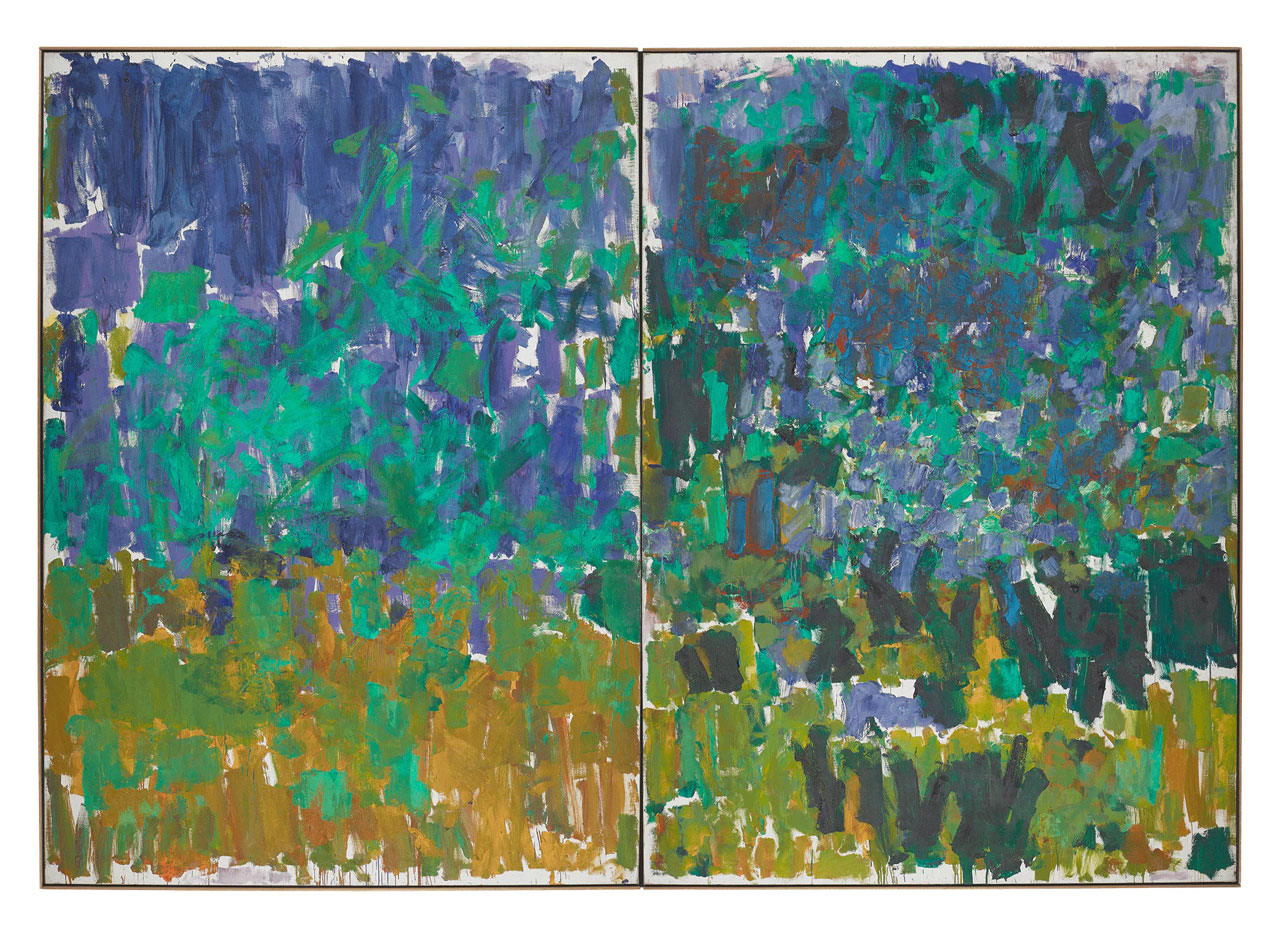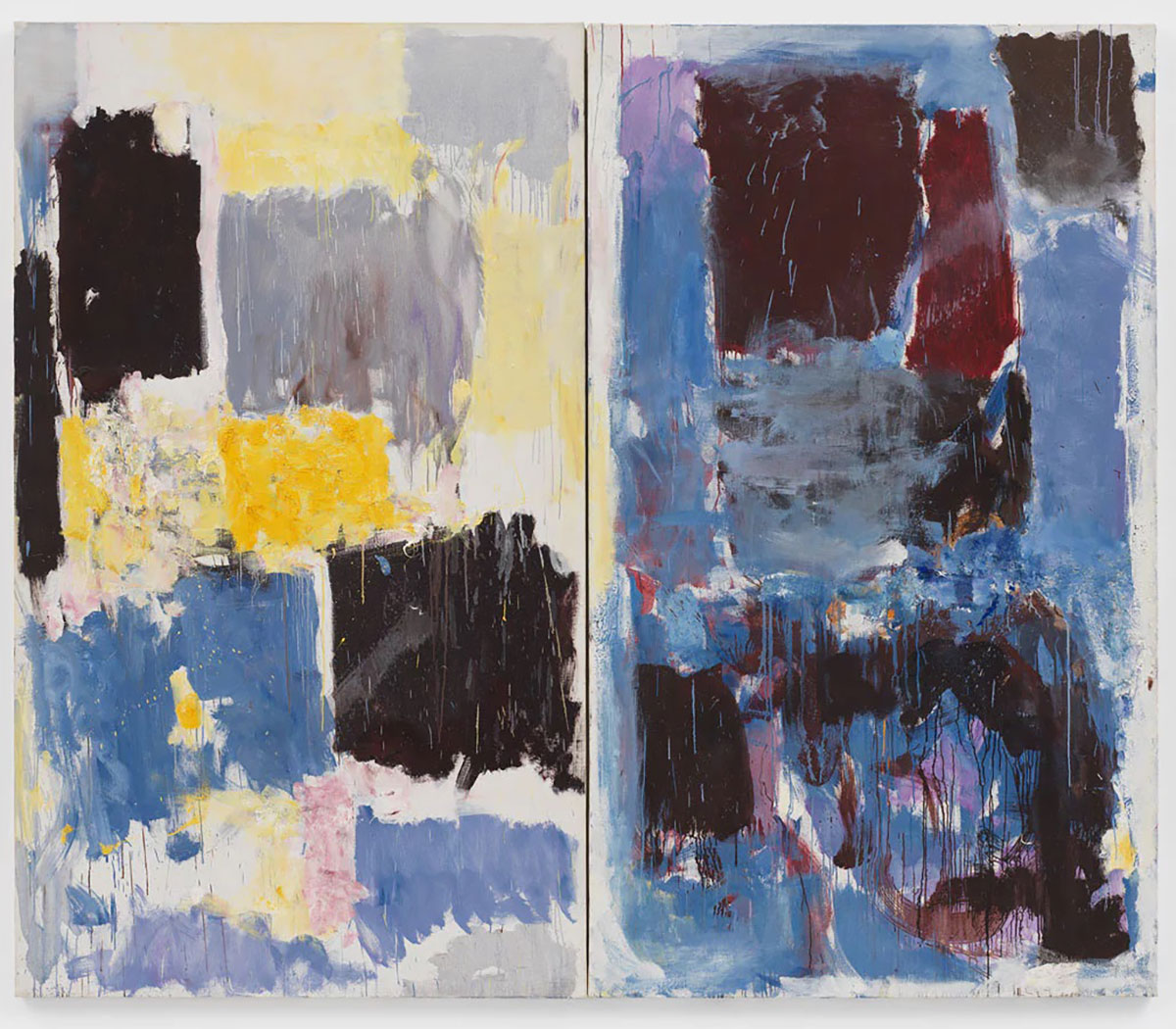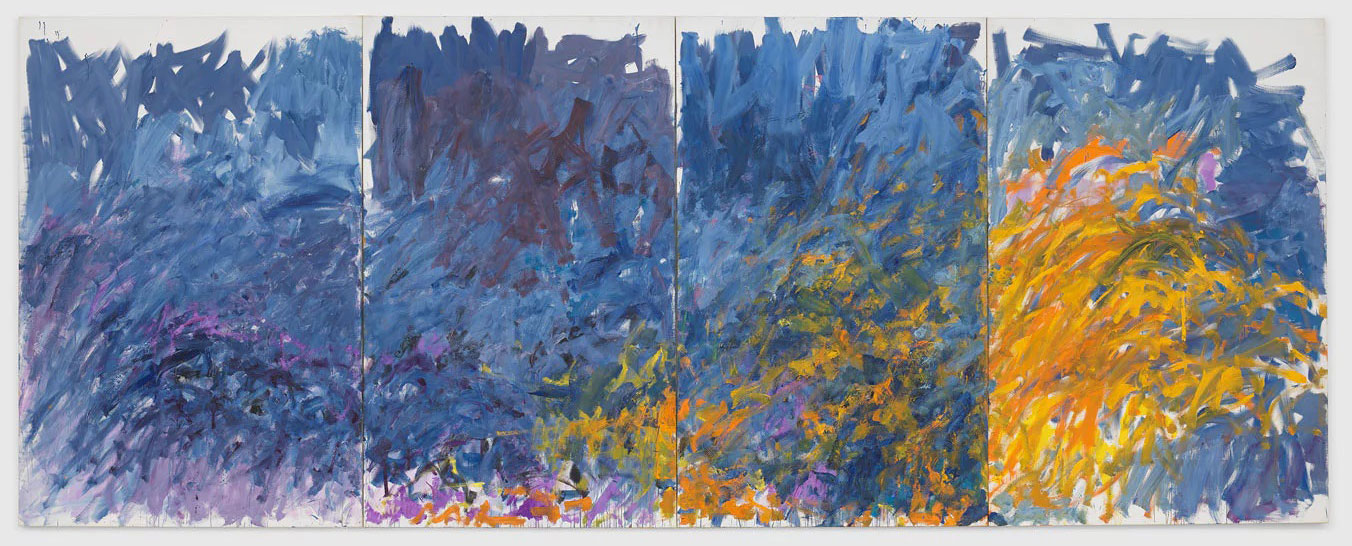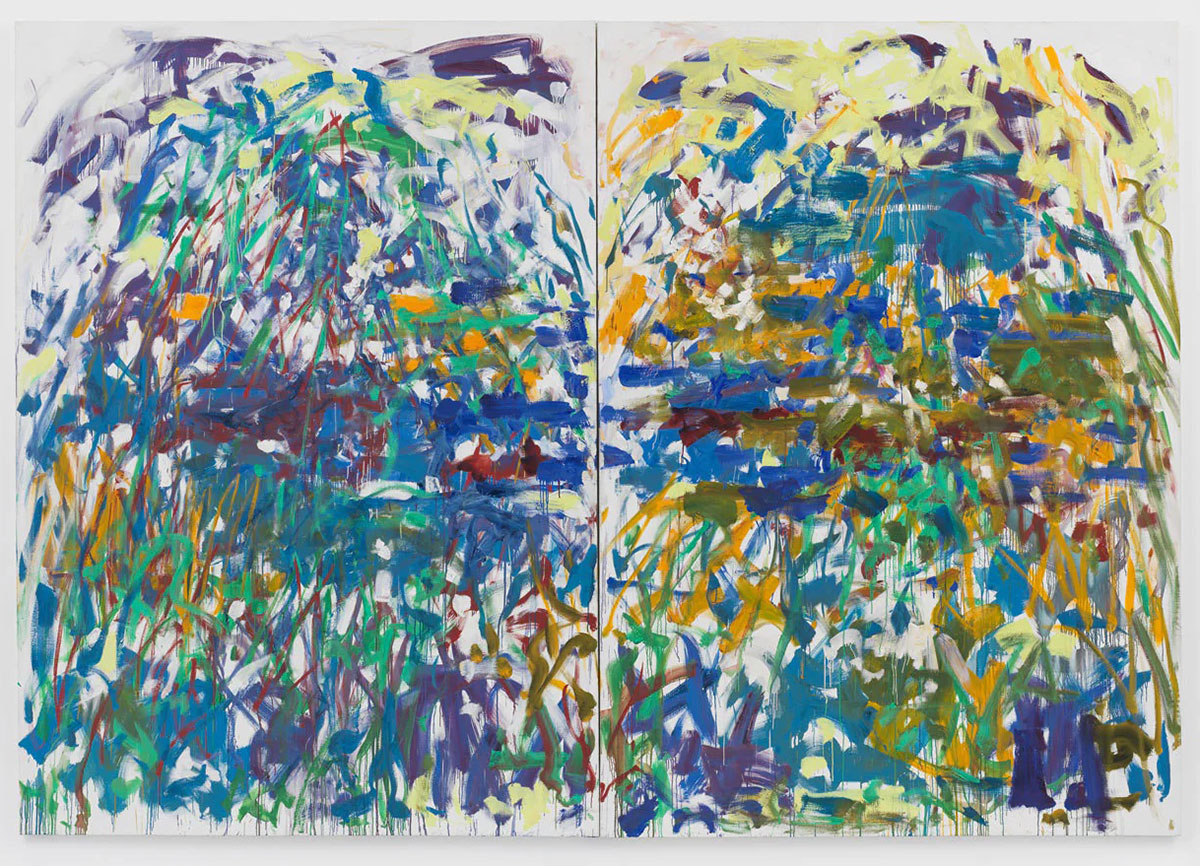ART CITIES: N.York-Joan Mitchell
 One of the few artists of her generation to embrace polyptych compositions, Joan Mitchell over time refined and expanded her approach to this format, orchestrating a distinctive balance between continuity and rupture both within and across panels. The horizontally oriented, panoramic expanse of these paintings is ideally suited to landscape, an important and enduring subject for Mitchell that she linked directly to memory.
One of the few artists of her generation to embrace polyptych compositions, Joan Mitchell over time refined and expanded her approach to this format, orchestrating a distinctive balance between continuity and rupture both within and across panels. The horizontally oriented, panoramic expanse of these paintings is ideally suited to landscape, an important and enduring subject for Mitchell that she linked directly to memory.
By Dimitris Lempesis
Photo: David Zwirner Gallery Archive
Featuring paintings from both public and private collections, as well as from the holdings of the Joan Mitchell Foundation, the exhibition “Paintings 1979-1985” shows a significant and deeply generative period within Joan Mitchell’s decades-long career. Mitchell established a singular visual vocabulary over the course of her more than four-decade career. While rooted in the conventions of abstraction, Mitchell’s inventive reinterpretation of the traditional figure-ground relationship and remarkable adeptness with color set her apart from her peers, and resulted in intuitively constructed and emotionally charged compositions that alternately conjure individuals, observations, places, and points in time. Her prodigious oeuvre encompasses not only the large-scale abstract canvases for which she is best known, but also smaller paintings, drawings, and prints. For Mitchell, this period, which included her important 1982 solo exhibition at the Musée d’Art Moderne de Paris, was a time of profound artistic development, growth, and focus on the possibilities of painting. As she became even more fully immersed in daily life at her property in Vétheuil, France, surrounded by lush gardens, and challenged and inspired by new creative relationships, Mitchell’s studio practice flourished, and her work became even more ambitious and expansive. The exhibition includes a selection of the dynamic and resolved canvases Mitchell produced during these years in a range of formats, from ambitiously scaled multipanel works that are among the largest of her career to intimate single-canvas compositions, demonstrating her transition from the controlled structure of her mid-to-late-1970s paintings to the virtuosic allover compositions of the 1980s. Executed in an increasingly bold palette, these works exemplify her nuanced mastery of composition, scale, and color.The earliest painting in the exhibition, “Wood, Wind, No Tuba” (1979) marks Mitchell’s triumphant reimmersion in her studio following the departure of Jean Paul Riopelle, her companion of more than two decades, earlier that year. Dominated by a palette of radiant orange—one of the bright and vivid hues that recurs throughout Mitchell’s canvases of the early 1980s, the short, staccato brushstrokes that nearly fill the large-scale diptych suggest a renewed sense of confidence that would carry through the remainder of the artist’s career. The work’s title nods to her friendship with Gisèle Barreau, a young French composer who entered Mitchell’s circle around this time, and whom Mitchell considered a true creative equal. Barreau would become a fixture at Vétheuil along with a revolving group of young artists with whom Mitchell exchanged ideas, drawing energy and vigor from their shared creative pursuits. Bursting with yellows, the painting “Room” (1981) similarly reflects the bold exuberance of this new beginning as well as Mitchell’s renewed connection with her natural surroundings. Not seen publicly in more than twenty years, the quadriptych “Chez ma soeur” (1981) counts amongst Mitchell’s largest paintings. Executed during a period in which her beloved sister Sally was in the throes of a protracted battle with cancer, the work draws on Mitchell’s memories of time spent at Sally’s home in Santa Barbara, California, poetically balancing the suggestion of a landscape with a sense of tenderness and self-contained interiority. A number of small-scale canvases from across this period punctuate the exhibition. Throughout her career, Mitchell played with scale, frequently creating intimately sized works in both single and multi-panel formats that reflect her overall compositional dynamism and experimental approach to her practice. Mitchell was able to easily move these compositions around her studio, recombining, comparing, and contrasting them, allowing her to create myriad variations on a theme. By the mid-1980s, Mitchell’s paintings began to shift in tone in the wake of her important “Grand Vallée” cycle of 1983 to 1984. Beginning in the summer of 1984, Mitchell experienced a number of personal health setbacks and the paintings that followed, which she bestowed with open-ended, existentially inflected titles, consequently turned inward. In canvases such as “Before, Again I” (1985) and “Between” (1985), Mitchell’s long, calligraphic brush strokes dominated by blues and green slope across the canvas. In the “Then, Last Time IV” (1985) the pure physicality of Mitchell’s brushwork is further laid bare as the negative space that she so confidently evacuated from her works in the earlier part of the decade begins to reappear, presaging her masterful late paintings of the 1990s. Rich hues of green and blue tangle with white and areas of bare canvas, creating a dynamic play between figure and ground. Mitchell also sets up a lively visual tension between heavily built-up areas of paint and thinner washes and skeins of paint that drip down the canvas. Throughout this time, Mitchell continued to look to painting as a means of translating her own experiences and harnessing the vitality of her impressions.
Photo: Joan Mitchell, Row Row, 1982, Oil on canvas in two (2) parts, 110 1/4 x 157 7/8 inches (280 x 401 cm). Collection of the Joan Mitchell Foundation
Info: David Zwirner Gallery, 537 West 20th Street New York, NY, USA, Duration: 3/11-17/12/2022, Days & Hours: Tue-Sat 10:00-18:00, www.davidzwirner.com/
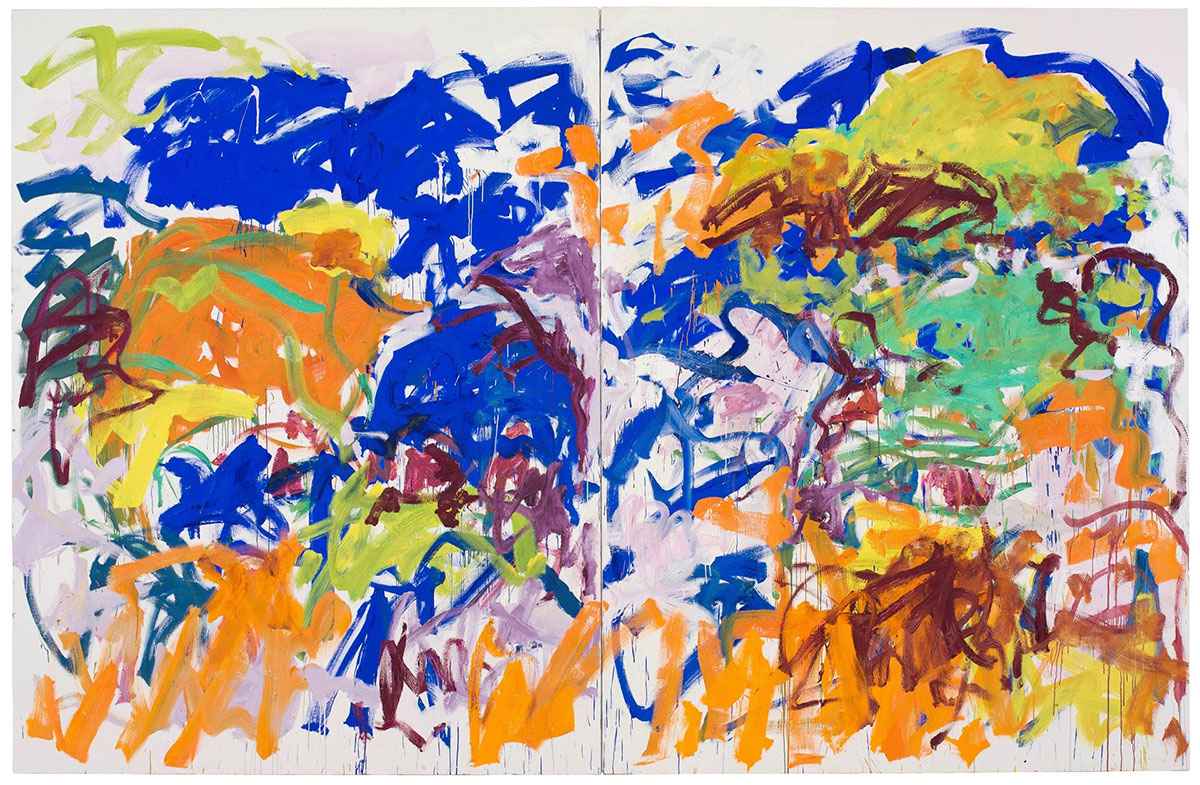
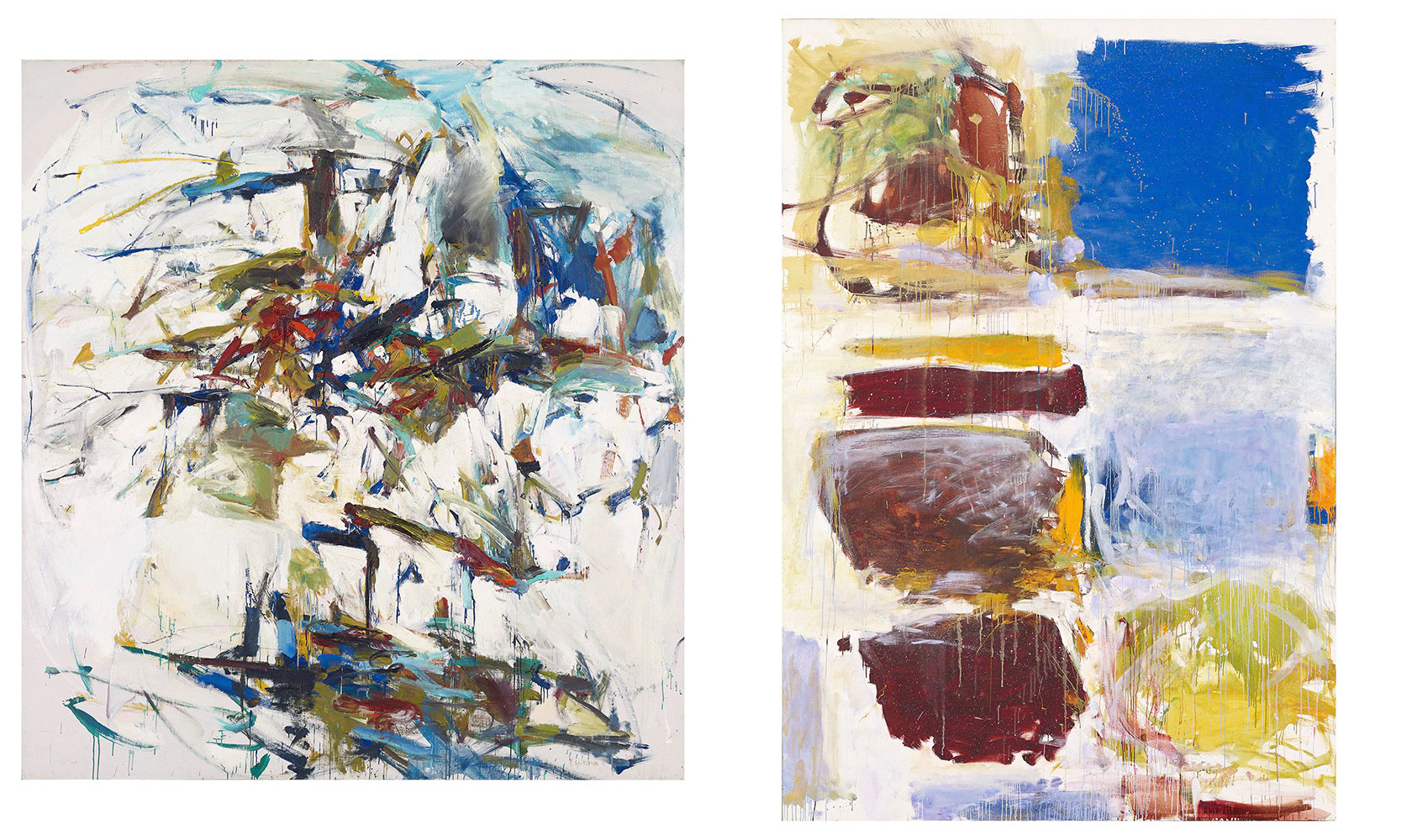
Right: Joan Mitchell, Blue Territory, 1972, Oil on canvas, 102 3/8 x 70 7/8 inches (260 x 180 cm), Courtesy David Zwirner Gallery
